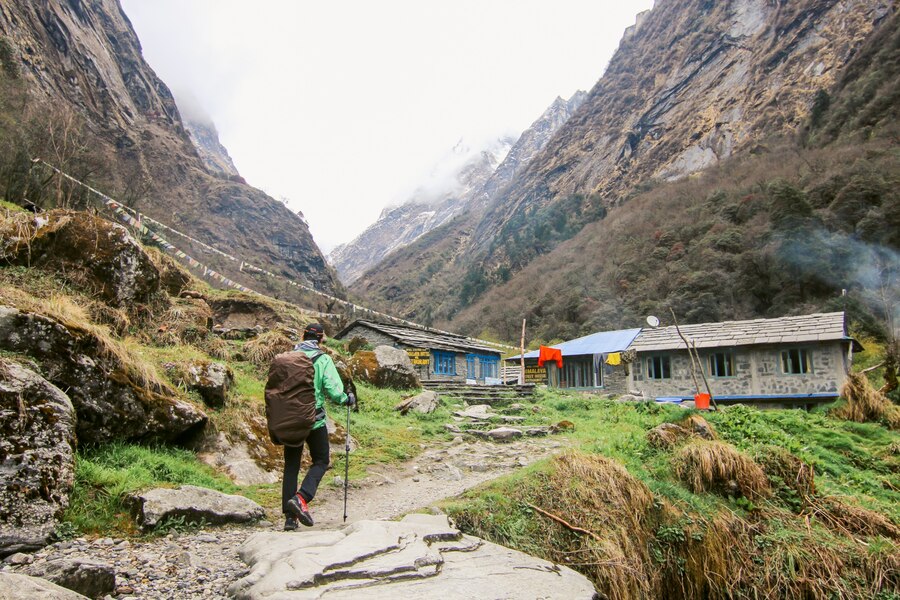Nepal is a treasure trove for trekking enthusiasts, offering not just the famous Everest Base Camp and Annapurna Circuit but also an array of lesser-known trails that promise solitude, cultural richness, and raw natural beauty. Off-the-beaten-path trekking routes in Nepal are perfect for those seeking adventure away from crowded trails, offering unique experiences that blend scenic diversity, local traditions, and a connection to unspoiled landscapes. In this article, we’ll explore some of the most fascinating hidden trekking gems in Nepal, how they compare to popular routes, and why they deserve a spot on your bucket list. Along the way, you’ll discover essential tips, FAQs, and resources to plan your trekking adventure.

Why Choose Off-the-Beaten-Path Routes?
While mainstream trails in Nepal are undeniably spectacular, they often attract large crowds, which can detract from the serenity many trekkers seek. Off-the-beaten-path trekking routes provide:
- Authenticity: Explore untouched villages and interact with locals who rarely encounter tourists.
- Adventure: Navigate challenging terrains and discover trails that remain underexplored.
- Solitude: Experience the true wilderness of Nepal without the hustle of crowded teahouses.
- Biodiversity: Encounter unique flora and fauna in remote regions.
For those willing to step away from the typical, these trails offer unparalleled rewards.
Hidden Gems: Top Off-the-Beaten-Path Treks
1. Kanchenjunga Base Camp Trek
This trek to the base of the world’s third-highest mountain, Kanchenjunga, is a dream for adventurers. Unlike the Everest or Annapurna circuits, Kanchenjunga remains an isolated paradise, offering majestic mountain views, serene glacial valleys, and a peek into the life of ethnic groups like the Limbu and Rai.
- Distance: Approximately 220 km
- Duration: 20–25 days
- Difficulty: Challenging
Real Also: Kanchenjunga Trek Guide
2. Manaslu Circuit Trek
Manaslu Circuit is rapidly gaining attention for its raw beauty and cultural significance. The trek circles Mount Manaslu (8,163m), passing through ancient Buddhist monasteries, snow-capped peaks, and Larkya La Pass (5,213m), one of the highest trekking passes in Nepal.
- Distance: 177 km
- Duration: 14–18 days
- Difficulty: Moderate to strenuous
Real Also: Manaslu Trekking Essentials
3. Nar Phu Valley Trek
This trek unveils the mystical valleys of Nar and Phu, hidden gems within the Annapurna region. Trekking through narrow gorges, alpine pastures, and medieval Tibetan villages, this trail combines adventure and cultural immersion.
- Distance: 75–100 km
- Duration: 9–12 days
- Difficulty: Moderate
Real Also: Nar Phu Valley Highlights
4. Upper Dolpo Trek
Upper Dolpo offers a glimpse into Nepal's ancient Tibetan culture, with its stark landscapes and sacred monasteries. Featured in the movie Caravan, Dolpo’s mystical beauty is complemented by encounters with nomadic communities and wild yaks.
- Distance: Around 200 km
- Duration: 18–25 days
- Difficulty: Strenuous
Real Also: Dolpo Trek Overview
5. Tsum Valley Trek
Known as the "Hidden Valley," Tsum Valley is a sacred Himalayan pilgrimage site that remains pristine. The trek reveals Tibetan Buddhist culture, ancient monasteries, and panoramic views of Ganesh Himal.
- Distance: 160 km
- Duration: 14–18 days
- Difficulty: Moderate
Real Also: Tsum Valley Travel Insights
At-a-Glance Comparison Table
| Trek Name | Distance (km) | Duration (days) | Difficulty | Highlight |
|---|---|---|---|---|
| Kanchenjunga Base Camp | 220 | 20–25 | Challenging | Remote wilderness |
| Manaslu Circuit | 177 | 14–18 | Moderate | Cultural diversity & Larkya Pass |
| Nar Phu Valley | 75–100 | 9–12 | Moderate | Tibetan villages |
| Upper Dolpo | 200 | 18–25 | Strenuous | Stark landscapes |
| Tsum Valley | 160 | 14–18 | Moderate | Sacred monasteries |
What to Know Before You Trek
Essential Tips:
- Permits: Most off-the-beaten-path routes require special permits, such as TIMS (Trekkers' Information Management System) and restricted area permits.
- Guides and Porters: Hiring a guide is recommended for safety and navigation in remote regions.
- Preparation: Ensure you are physically and mentally prepared for long days of trekking.
- Packing: Include essentials like a quality sleeping bag, waterproof clothing, and high-altitude medication.
Best Time to Visit:
The ideal time for trekking in Nepal is pre-monsoon (March to May) and post-monsoon (September to November) when the weather is clear, and the trails are vibrant with blooming flora.
FAQs About Off-the-Beaten-Path Trekking in Nepal
Q1: Are these treks suitable for beginners?
A: While some treks like Tsum Valley are moderately challenging, most require prior trekking experience due to their remoteness and altitude.
Q2: What kind of accommodation can I expect?
A: Accommodations vary from basic teahouses to camping sites, depending on the region.
Q3: How safe are these trails?
A: Safety depends on preparation and guidance. Hiring a licensed guide reduces risks significantly.
Q4: Can I trek solo on these routes?
A: Some regions require a minimum of two trekkers for permits, so check requirements beforehand.
Q5: What is the cost of trekking in remote areas?
A: Costs range from $1,500 to $3,500, depending on permits, guides, and the duration of the trek.
Conclusion
Embarking on off-the-beaten-path trekking routes in Nepal is an adventure of a lifetime. These trails not only challenge your limits but also offer rare opportunities to immerse yourself in Nepal’s natural and cultural treasures. Whether it’s the breathtaking views of Kanchenjunga, the spiritual serenity of Tsum Valley, or the untamed wilderness of Upper Dolpo, each route has something unique to offer. With proper planning, these treks will reward you with memories and experiences that go far beyond the ordinary.
Real Also: Explore Nepal’s Hidden Trails
